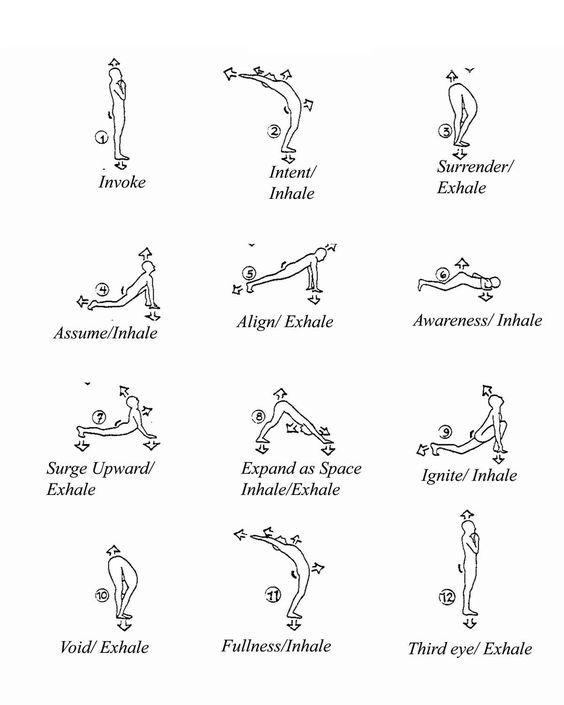Tantric Yoga Exercises – 5 Helpful Tips to Deepen Your Practice
Like the tantric massage, tantra yoga has many benefit for your body and as well as soul, today we invited Mark from Tantric massage guide to introduce some tips on Tantra to help your practice.
Today many forms of yoga reduce it to merely physical exercise. That is naturally a great help for the flexibility and suppleness of the body, but there is more to yoga than meets the eye. Tantric yoga exercises can help you discover more vitality, calmness, a new realm of existence and increased depth of your being.
The general benefits of yoga are well-known, and properly done, the exercises will help you to balance the body, mind and specifically the nervous system. When the nervous system relaxes, the cortisol and other stress hormone levels will go down, which in turn will help you to enter the recovering “Rest and Digest” state. This is essential for good functioning of the immune system and healing of the body: sleep is deeper and refreshing and digestion works well. Ah, did I hear this is a problem for you? Daily chores and work stresses you? Try yoga!
Concentrating and focusing on the exercise will reduce anxiety and increases the gray matter of the brain, so that new neural pathways can be formed. It will help you to think more creatively, widen your perspective and make better decisions. Here are my tips to deepen your practice:
1. Start your practice with right attitude
First, take a few deep inbreaths together with even longer exhales. This will help your muscles and nerves to enter a relaxed state. Let all of your worries melt away for the duration of the practice, and stay open and receptive to receive whatever will be offered to you.
You can also dedicate the practice to the Divine, Absolute, God or whatever greater force you choose to believe in. To detach from the outcome of the practice will help you to get tuned with the subtle energies of the Universe.

Top’s Massage therapist is demonstation tantra Yoga asana
2. Hold the asana a bit longer
Similar with tantric massage, In tantric yoga, we let the body get in to the resonance with the beneficial energies of the universe. That’s why it is important that you keep the asana for several minutes – three minutes is great to start with. Then work up to longer times, up to 15 minutes as a beginner. After you have finished the asana, just listen and observe your body for a while. What do you feel in your body? How does it feel?
The asana should be stable and relaxed at the same time. If you try to push your body too far with the practice, you won’t be able to hold it steady long enough to reap the benefits.
3. Focus on energy within the body
While keeping the asana, maintain your steady focus on the body part the asana is working on. For example in Pachimottanasana, keep your attention on the root chakra, the Muladhara, which is located at the perineum. At first, it is possible that you do not feel much or nothing at all. If you keep on paying attention to the more subtle body sensations, after some days or weeks of practice you will start to notice them.
Most likely your mind will wander away. This is normal and to be expected. Don’t worry about it, just bring the attention gently back to the exercise. You can see or feel the thoughts as drifting clouds on a blue sky. You can acknowledge the thought, and then allow it to pass.
Usually the focus will be in the various chakras in the body. I have marked the focus points in the practice sheet that you can get from me.

tantra yoga asana
4. Listen to your body, not your ego
When you do the practice, keep in mind that you are gentle and kind to your body. Do not over-do or overstretch, or try to force any movement. The physical performance of the asana is not so important – rather keep the focus on the energy as stated earlier. Continuing practice will make your body stronger and more flexible, but yoga is not necessarily a quick fix. Keep on practicing and the results will come!
Sometimes students get injured in their yoga practice. Most often it happens because they have tried to force the body or a limb to a certain posture. Take it easy, the body will get used to the more demanding asanas slowly but surely!
5. Always end with relaxation
After you have done your asana session, it is crucial that you perform the final relaxation, the Shavasana. This allows time for regeneration of the body, integration of exercises and letting the energies distribute evenly around the physical and subtle bodies. You can start the relaxation by observing the breath: just feel how the breath flows in and out of the body. Nothing needs to be changed, just observe. Where do you feel the breath? You can also perform a body scan, where you move your attention to each and every part of the body. The order is not of utmost importance, but it’s better to do it in the same way every time.
If you live in the colder climates, it is a good idea to wear socks and a blanket for the duration of relaxation. It is much easier to relax if the body stays warm. You can set the alarm in 5 or 10 minutes, but try to stay awake. If you feel sleepy, you could hold one hand up from the elbow while lying in Shavasana.
It is highly recommended that you do the practice every day. Even if you could not do a very long practice, do it! 10 minutes is much more than nothing at all. You can make a commitment for a week to do yoga every day, no matter what. Once you accomplish that, your willpower will help you to keep on practicing and subsequent weeks will be easier.
With these helpful insights, you can take your practice to a totally new level and success in yoga is granted. Patanjali’s Yoga Sutra says:
When that practice is done for a long time,
without a break, and with sincere devotion,
then the practice becomes a firmly rooted,
stable and solid foundation.
If you would like to receive a copy of an example practice, sadhana, join my mailing list and I will send you a copy straight to your inbox, for free. If you have any questions about your practice, feel free to ask and comment below.
Happy practicing!
Mark



